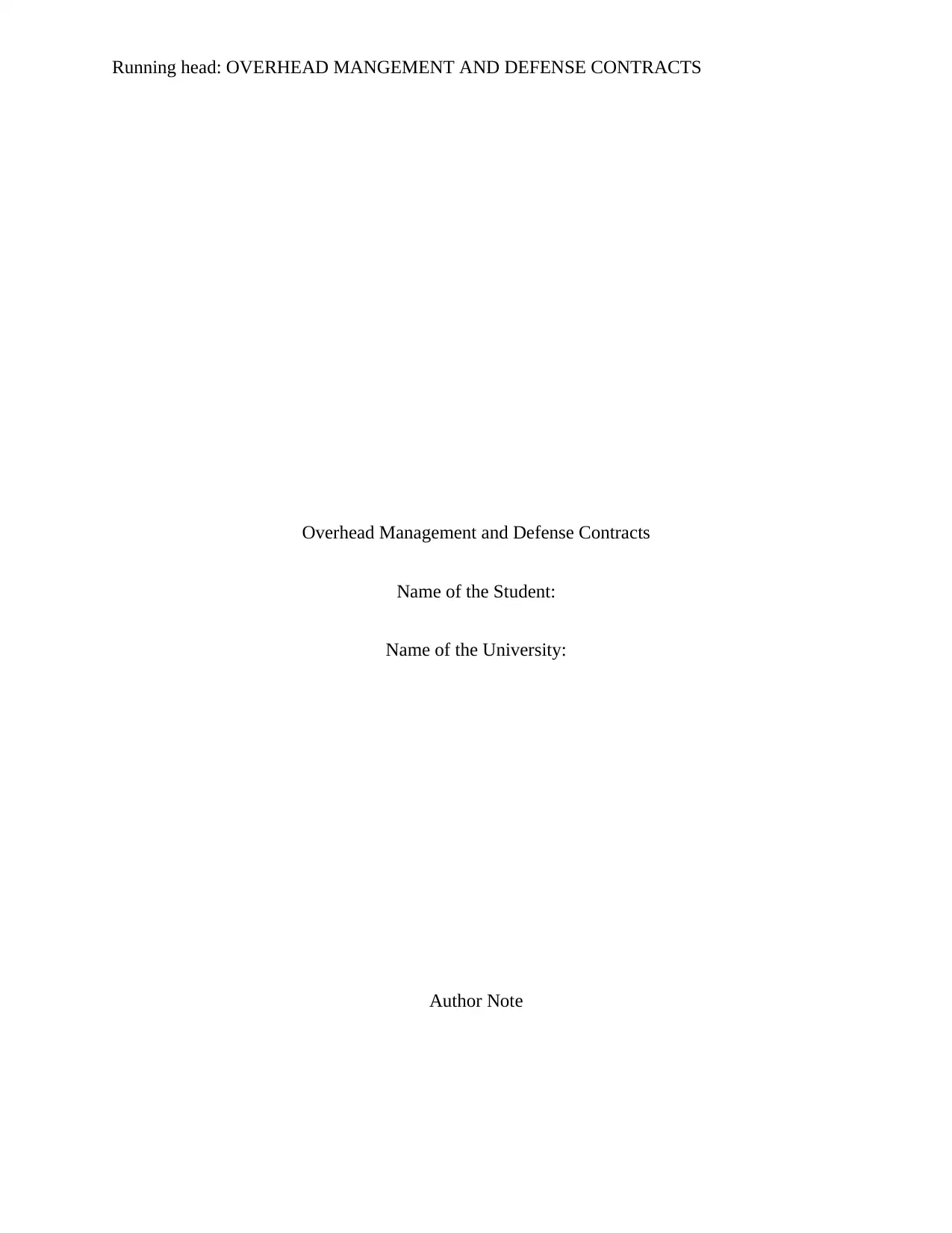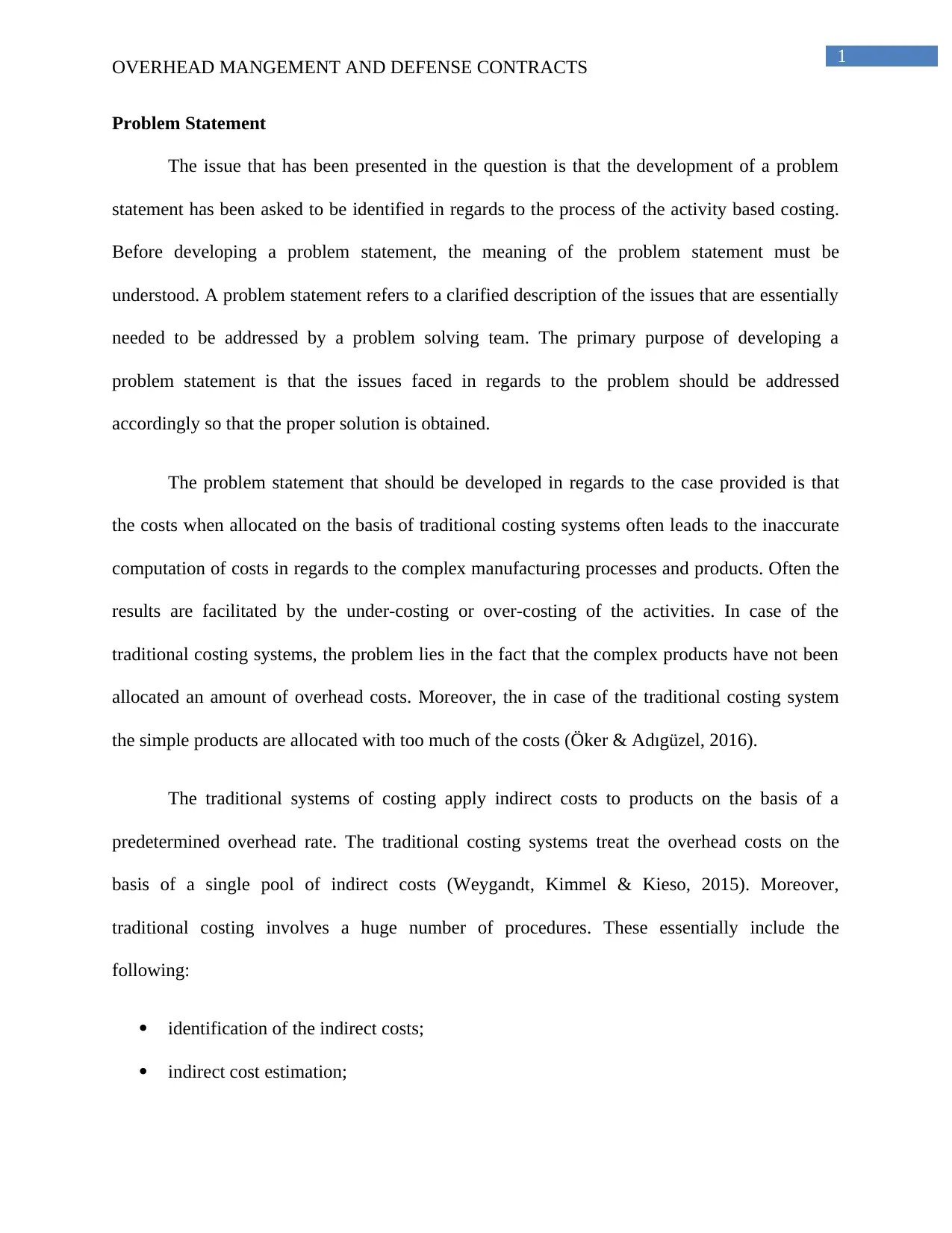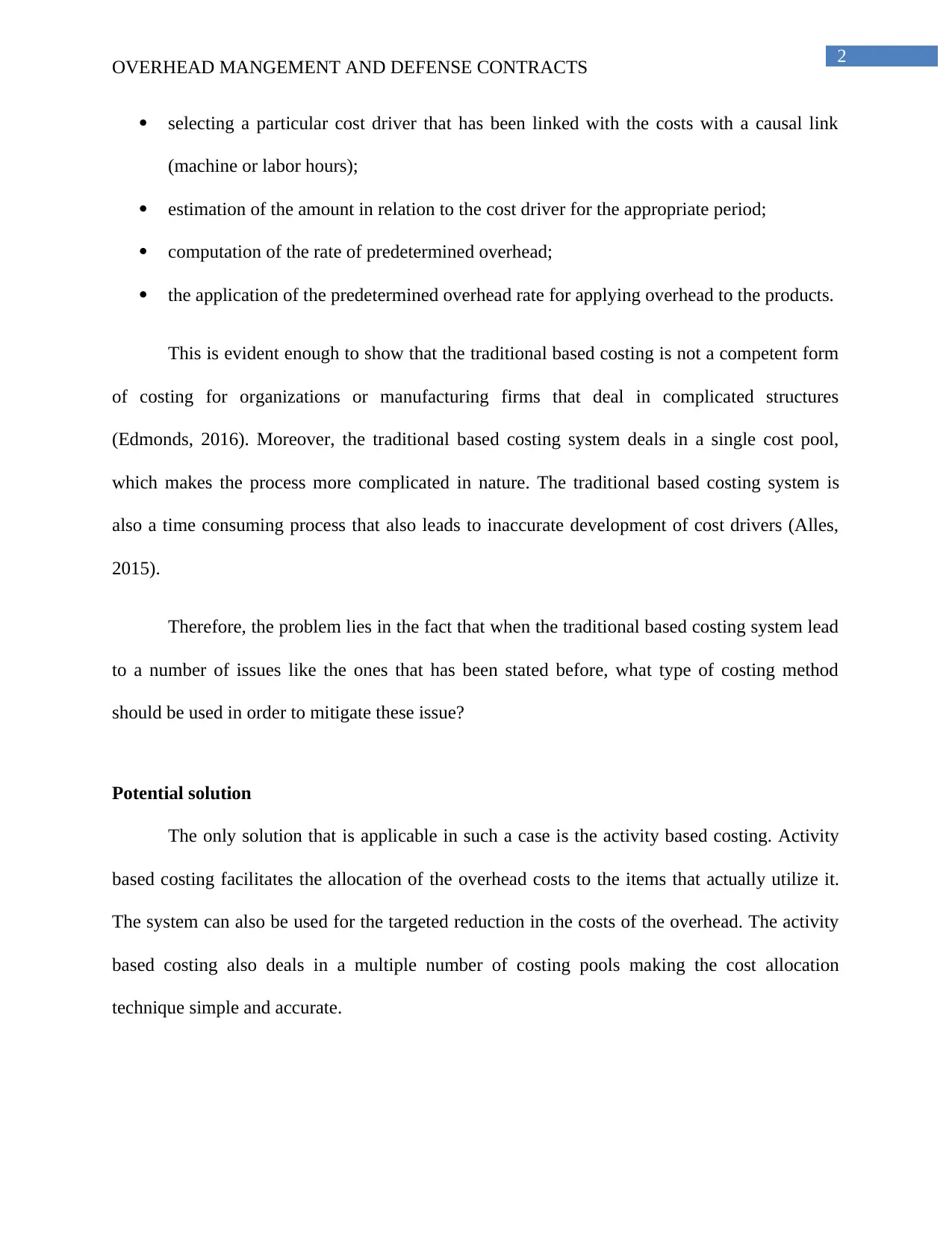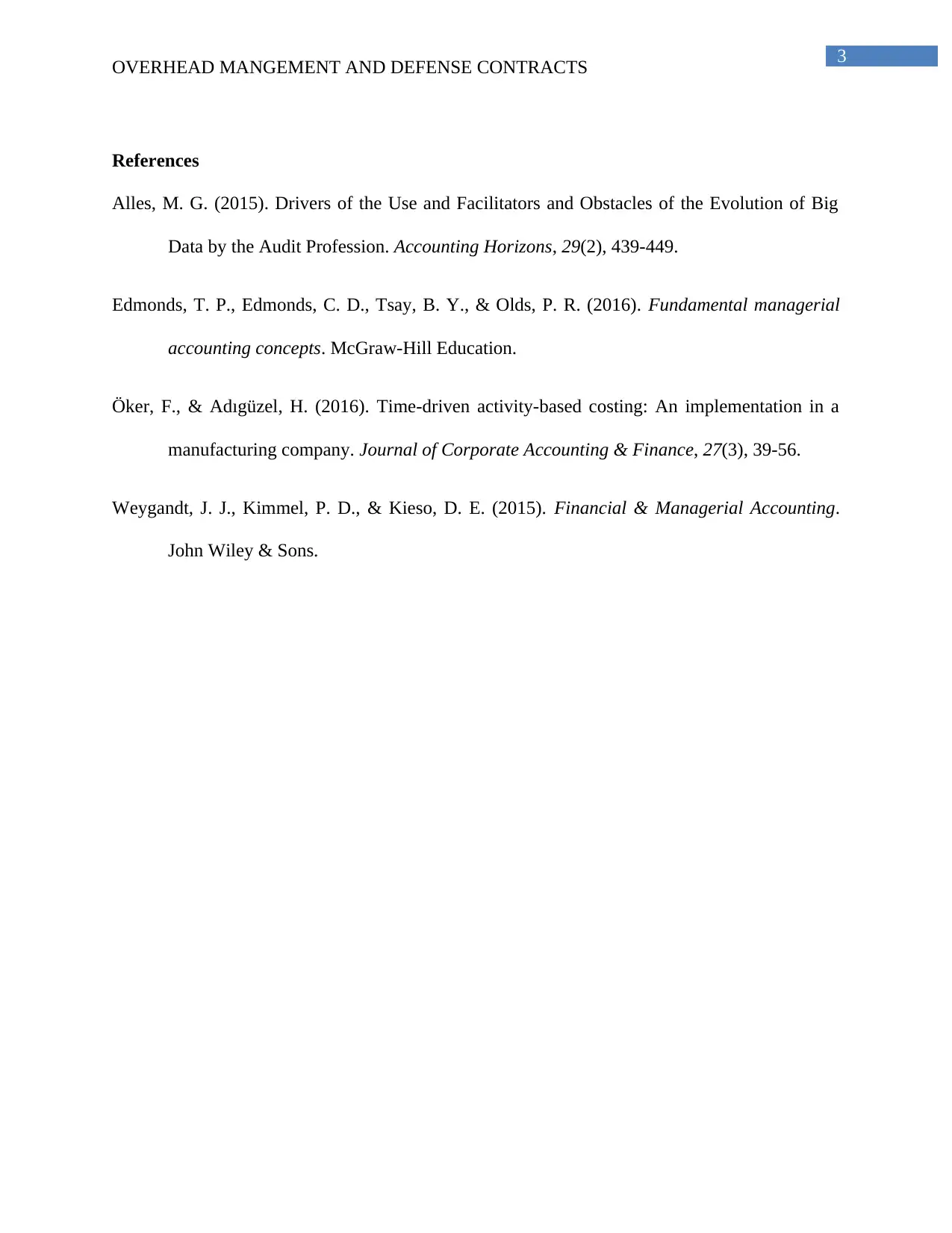Activity-Based Costing in Defense Overhead Management
VerifiedAdded on 2020/05/28
|4
|725
|85
Homework Assignment
AI Summary
The homework assignment focuses on the inefficiencies associated with traditional costing methods when applied to complex manufacturing processes, particularly within the context of defense contracts. Traditional costing systems allocate indirect costs using a predetermined overhead rate based on cost drivers such as machine hours or labor hours. This can lead to inaccuracies like under- or over-costing of products due to their oversimplified approach that involves a single pool of indirect costs and numerous procedural steps, making it both time-consuming and inaccurate. The assignment identifies the problem with traditional costing methods in complex product environments and proposes activity-based costing (ABC) as a solution. ABC offers more accuracy by allocating overhead costs based on actual consumption through multiple cost pools. It addresses the limitations of traditional systems by simplifying the allocation process and improving the accuracy of cost drivers, ultimately providing better financial insights for manufacturing firms dealing with intricate products.
1 out of 4










![[object Object]](/_next/static/media/star-bottom.7253800d.svg)